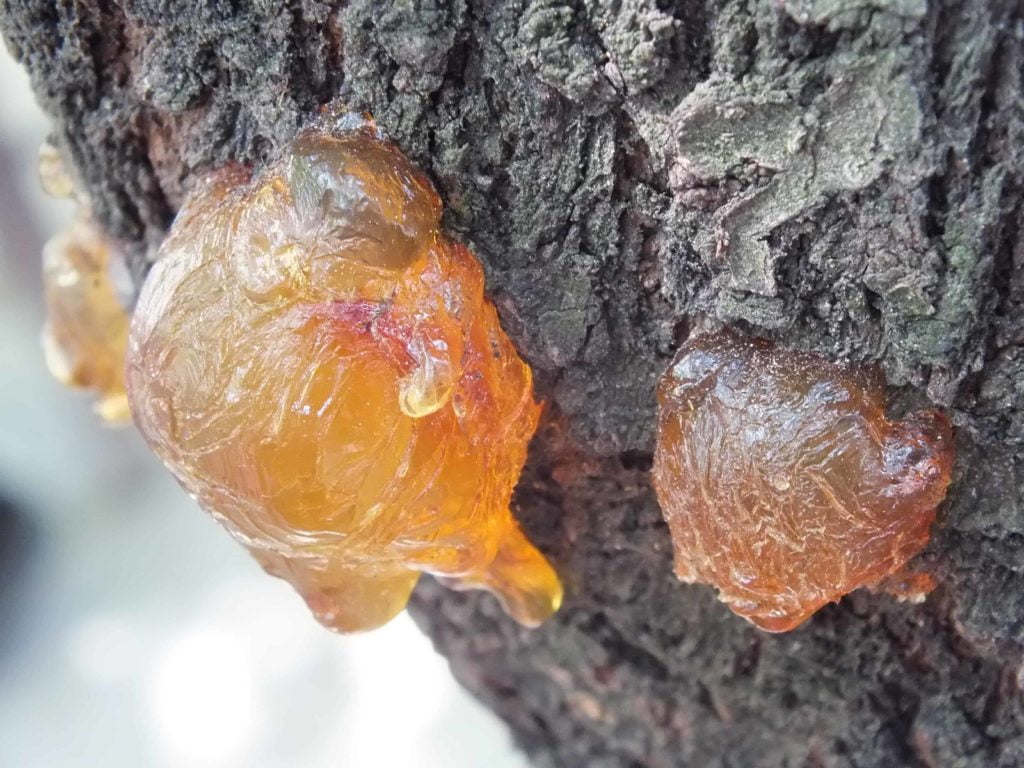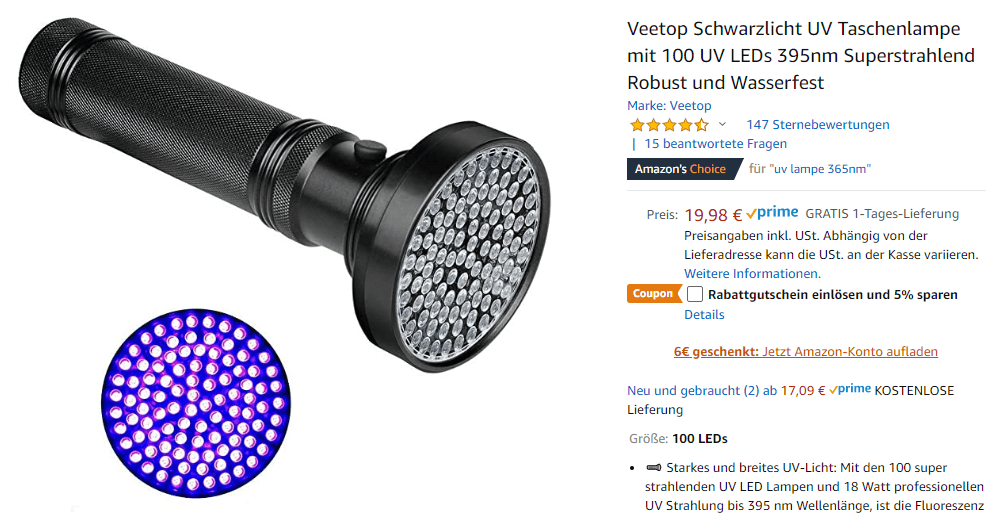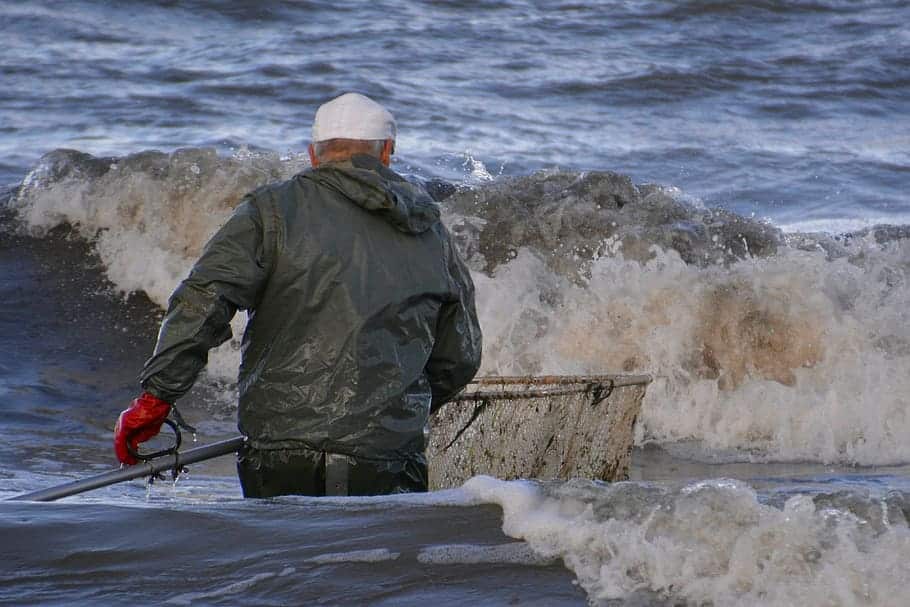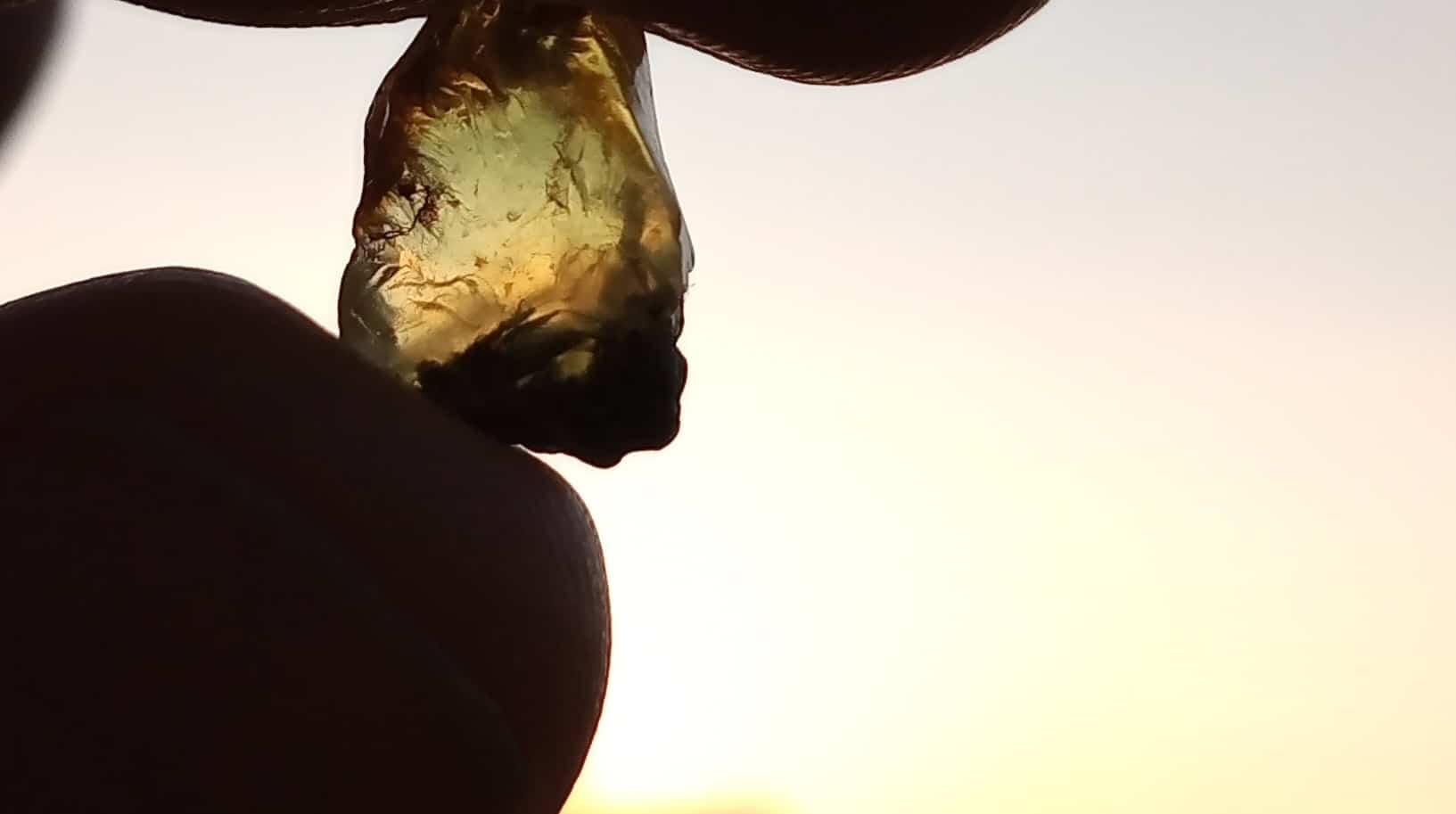Inhalt dieses Beitrages
What is amber?
Amber (Danish Rav, English amber) comes from huge forests that spread across large parts of what is now Northern Europe 55 to 35 million years ago.
Amber is a hardened resin that the trees have sweated out. The resin dripped onto the forest floor, where after several thousand years it hardened and turned amber. However, amber is never found where it was formed.
Sea, rivers and ice from the Ice Ages have transported it far and wide – the amber is spread over a huge area – from England in the west to Russia and Ukraine in the east.
The largest deposits of amber are today at the West coast of Jutland and at the Baltic coast of the Baltic countries .

9 good tips for searching for amber
Amber searching has become very popular in recent years. But where do you look and when is the best time to find amber? Daenemark-Reisen.com has put together a guide for those who want to go on the amber hunt.
Increase your chances with special UV lamps
Did you know that amber lights are specially designed to make it easy to spot amber from a long distance? They emit a special UV light that causes the biological microorganisms in the amber to fluoresce and light up (source: The Great Danish). It is also because of the amber lights that it has become so popular to hunt amber at night because the light from the lamps is not clear during the day.

The amber lights are useful for amber hunting as no fossils other than amber will light up. Suddenly, when you use these flashlights, it’s easy to see where the amber is hidden beneath all the other material on the beach. Especially when it is completely dark it is very easy to spot the amber light which increases your chance of finding treasures both large and small.
You have to look in the dark in the evening or at night, of course. We recommend buying a pair of UV protection glasses at the same time, so that the eyes are a little less strained. With the UV glasses also see immediately again a little better.
Go to the right beaches
In Denmark we have some of the best ways to find amber and you can actually find amber on all of Danish coasts. There are of course places that are more productive than others.
Look for the amber in seaweed, clams, and things washed up
Many people think that it is among the stones on the beach that you should look for amber, but you will rarely find amber here. And when you do, it’s in lumps of several pounds.
Amber washes up on the beach along with seaweed and shells. Therefore, you should look for it here as well. Look carefully for algae with chopsticks, yellow mushrooms, pieces of charcoal, and other goodies. In general, it is always good to run in the “flush” that occurs on the beach. The golden fossil is also found in materials such as old pieces of wood and peat debris.

So far we have found ALL of our ambers in the seaweed that was washed up on the beach. Once in autumn and once in spring. Never in summer.
Another great tip is to keep an eye on where the seagulls dive for food.
Best to look for in winter or after a storm
The best thing is to go looking for amber when there has just been a strong storm or wind that has carried the water far to the beach. This is because amber is usually stored well under the sand and can only be cleared by a severe storm. However, no amber is found while the storm is raging. You have to wait for the wind to subside. This is when the chance of finding amber is greatest, and the amber is often even in the top layer of the beach.
The amber season lasts between autumn and spring. The winter months are best. This is where the best chance of finding amber is as the cold sea generally provides the best conditions for carrying the amber to the beach. This is also related to the density of the water. during this time the amber is relatively lighter and loosens from the sea floor.
Additionally, there are fewer people on the beach during the winter months, so you don’t have as many competitors.
Be careful not to confuse amber with phosphorus
There are some simple safety precautions that you must follow when hunting amber. If you are really unlucky you run the risk of collecting phosphorus instead of amber. The two materials can be similar to each other, but phosphorus is toxic and highly flammable.
This is why it is always a good idea to have a glass or metal container for your finds and never bite amber.
Phosphorus comes from the bombs of World War II.
Do You Know Amber When You See It?
When searching for amber, do not pay attention to the familiar yellow-brown color. Because then you usually only get the yellow flint test.
It is important to know that in nature, amber does not resemble the polished amber found in jewelry stores. Amber is available in many different colors, from black to white to blue. And it often comes in raw lumps.
A good characteristic of amber is its light weight. Amber is incredibly light and has a density of only 1.01. This means that amber is only slightly heavier than water and therefore amber should never be confused with stones, which are significantly heavier.
Go on amber hunt with others and get wiser
It is nice to hunt amber with others. For some it can also provoke a competitive spirit and the contest, “Who will find the first amber?” inflames.
You can also try taking one of the many guided amber tours that have lots of great advice if you want to increase your chances of finding amber. These trips may also allow you to borrow and try professional equipment such as amber lamps. The rides usually take place after dark as it is easier to use the lights to find the amber.
Have your amber made into a piece of jewelry – or sell it for a lot of money
When you are sure that it is amber that you have in your hands, the possibilities are endless in what you can use it for.
You might want to take it to a goldsmith or silversmith and have it made into a fine piece of jewelry like a necklace, brooch, bracelet, or something else. Certainly there aren’t many jewels with such an interesting history as amber, which was formed by the Ice Age and has moved from coast to coast for millions of years.
You can also have your amber assessed, try your luck, and put it up for sale. One often hears stories about someone who finds a particularly beautiful piece of amber that can sell for several thousand dollars. It is not without reason that amber is called the “gold of the sea”. It is still big business buying and selling amber in Denmark. The more unique the pieces, the better.
Where can you find amber in Denmark?
A lot of Bersnstein can be found on the Danish North Sea, for example in Blavand, but also on Römö and Fanoe. But amber can also be found on the Baltic Sea. Only a few amber finds are known from Bornholm so far.
The best locations for amber in Denmark
Photos:
Ingo Kroll
https://www.piqsels.com

